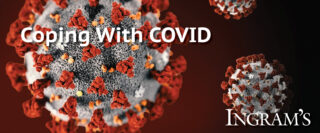HOME | ABOUT US | MEDIA KIT | CONTACT US | INQUIRE
HOME | ABOUT US | MEDIA KIT | CONTACT US | INQUIRE
Missouri and Kansas continue to see record numbers of new COVID-19 diagnoses this week, but more than three weeks after that larger wave emerged in the region, the mortality rates remain significantly below their mid-May peaks.

Twice in the past week, Missouri didn’t record a single COVID-related death, helping drive its rolling seven-day average of daily deaths to eight. That’s less than half the May 12 peak of 19 deaths.
In Kansas, a two-day stretch without new deaths on Friday and Saturday has pulled the seven-day average death count down to just one as of Monday morning. Like Missouri, that’s well below the crisis peak, which came even earlier—in late April, the state’s daily average death toll hit six on three separate occasions.
With 297 deaths through today, that leaves Kansas with a current case fatality rate of 1.46 percent. Missouri, where a much higher incidence of cases and fatalities in St. Louis has skewed statewide numbers to the high side, has a CFR of 3.77 with its 1,133 deaths. Nationwide, the rate is 3.97 percent, with 138,291 deaths attributed to COVID-19 among the 3.48 million positive tests.
The regional statistics are the more encouraging figures emerging from the latest metrics tracked by various sites. More attention, however, is being paid to infection rates, which are prompting a number of western states, such as California and Arizona, to reimpose restrictions on business activity and public gatherings.
The case rates continue to surge regionally, as well. According to rt.live, a Web site that tracks state-by-state infection rates, Kansas broke its daily record number of positive cases four times in the past seven reporting days, with 1,447 new cases reported on Monday. That was the first day since the crisis began where the daily new-case numbers topped 1,000.
The site placed the state’s Rt value, a measure of the rate of viral spread, at 1.16, suggesting that each person infected, on average, passes the virus to 1.16 others. Anything below 1.0 on that scale indicates the virus is declining in prevalence; above it, the virus is spreading, and the higher the number, the faster the rate of spread.
Over that same seven-day period, Missouri broke its daily record for new cases three times, including Saturday’s count of 1,134—also its first time to cross the 1,000-case daily threshold. The site also shows that Missouri’s Rt value has dipped back to 1.01, just barely over the line that indicates growth vs. decline in spread of the virus.